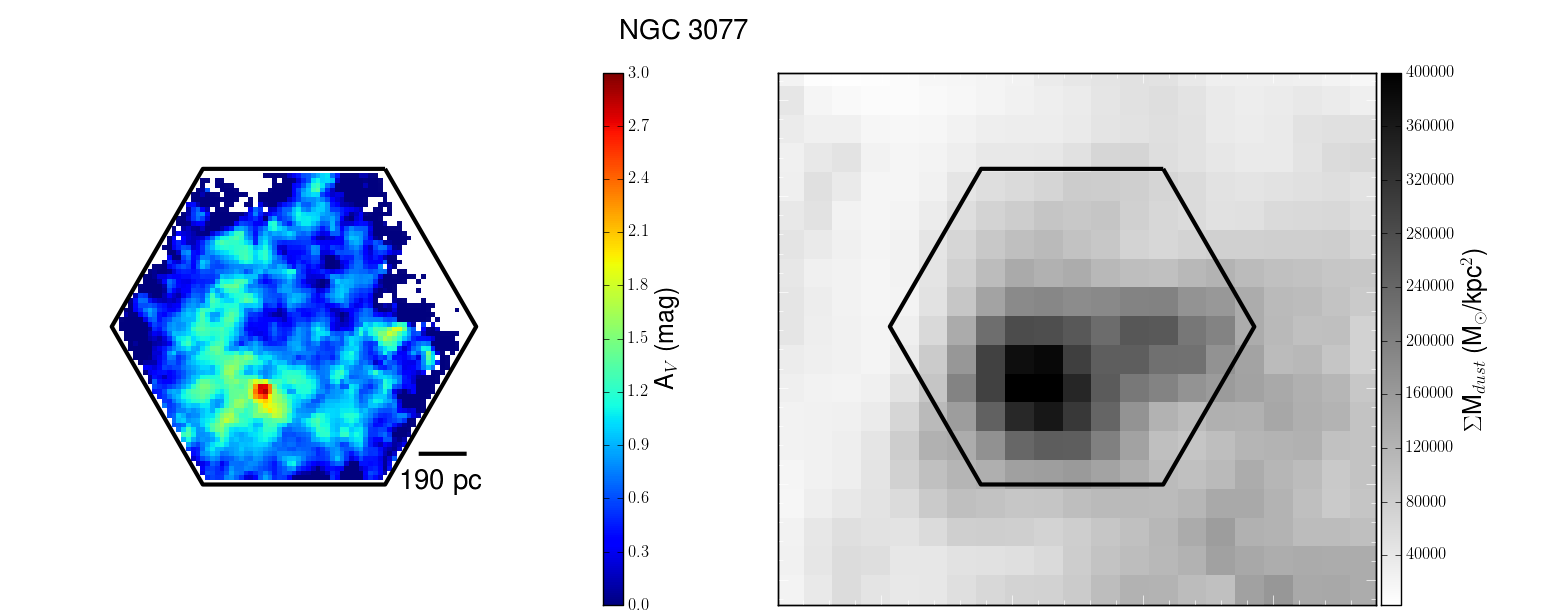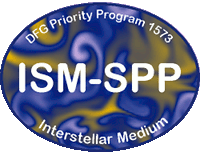The Reach of Stars: Tracing the interaction length of Stellar and AGN Radiation in the ISM
Brent Groves, Kathryn Kreckel, Eva Schinnerer

Two views of the dust in the nearby galaxy NGC 3077, through absorption and reddening of starlight (left) and through far-IR emission (right). On the left: The optical V-band extinction as measured from the reddening of the Balmer emission lines Halpha and Hbeta, assuming a Calzetti et al. (2001) attenuation law, using observations from PPAK optical IFU measurements within a hexagonally shaped field of view. On the right: The dust mass surface density as modeled from the far-IR dust SED, assuming a Draine & Li (2007) dust model, using Spitzer and Herschel imaging. For our sample of eight nearby galaxies, as is seen here with NGC 3077, we observe that regions with higher extinction correlate well with regions of higher dust mass surface density, allowing us to empirically calibrate the conversion between the two. This relation falls between the two extremes of dust-star geometry, of either aforeground screen of dust or a mixed media of dust and stars, and we find that comparisons at smaller physical scales (<500 pc) produce a tighter correlation (Kreckel et al. 2013).
For more details, please visit the project webpage:
http://www.mpia-hd.mpg.de/homes/kreckel/reachofstars.html
or the publication:
Kreckel, Groves, Schinnerer et al. 2013, ApJ, 771, 62
 This priority program is funded by the German Research Foundation DFG.
This priority program is funded by the German Research Foundation DFG.
